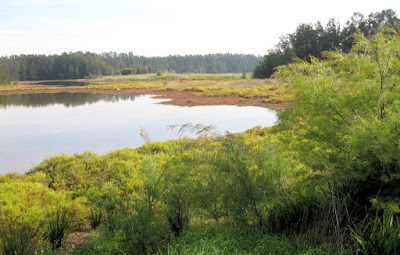We started this walk at Waverton Station following Balls Head Road, past HMAS Waterhen to Balls Head Reserve.

I had heard this park mentioned from time to time, but this was my first visit to the nine hectare reserve,1.5Km across the water from Sydney’s CBD. Before reaching the reserve we walked through one of the tunnels (above) of what was a coal loading facility until 1992.
On the eastern side of Balls Head, on Berrys Bay, is the former BP oil storage depot (tank cutting, right).
In January 2003, the NSW Government rezoned the BP site for open space and placed it under the care and management of North Sydney Council. Thirty one storage tanks were removed from the site in 1996. The parkland, now known as Carradah Park, were opened in March 2005.
Along the Lavender Bay foreshore, between Luna Park and Quiberie Park is a series of miniature sculptures: 'Hidden Treasures' by the artist Peter Kingston. They are based on iconic Australian comic characters such as The Magic Pudding (below left), from Norman Lindsay's classic children's book.

Beyond Quiberie Park is a pathway that leads past Luna Park (above right). I finished the foreshore walk at this point and caught a train from the nearby Milsons Point Station.
Location Map Additional Photos Walking Route Map




















